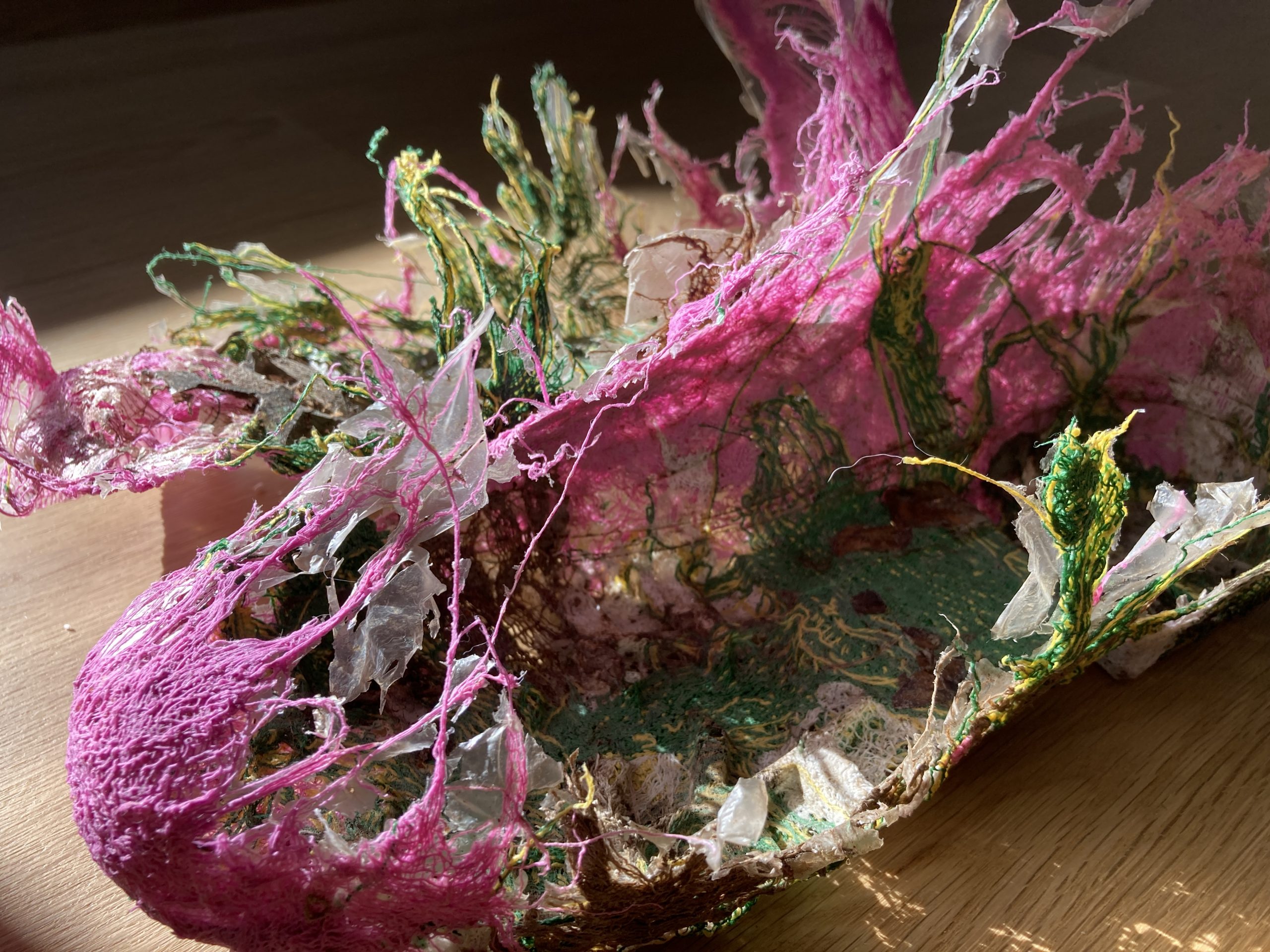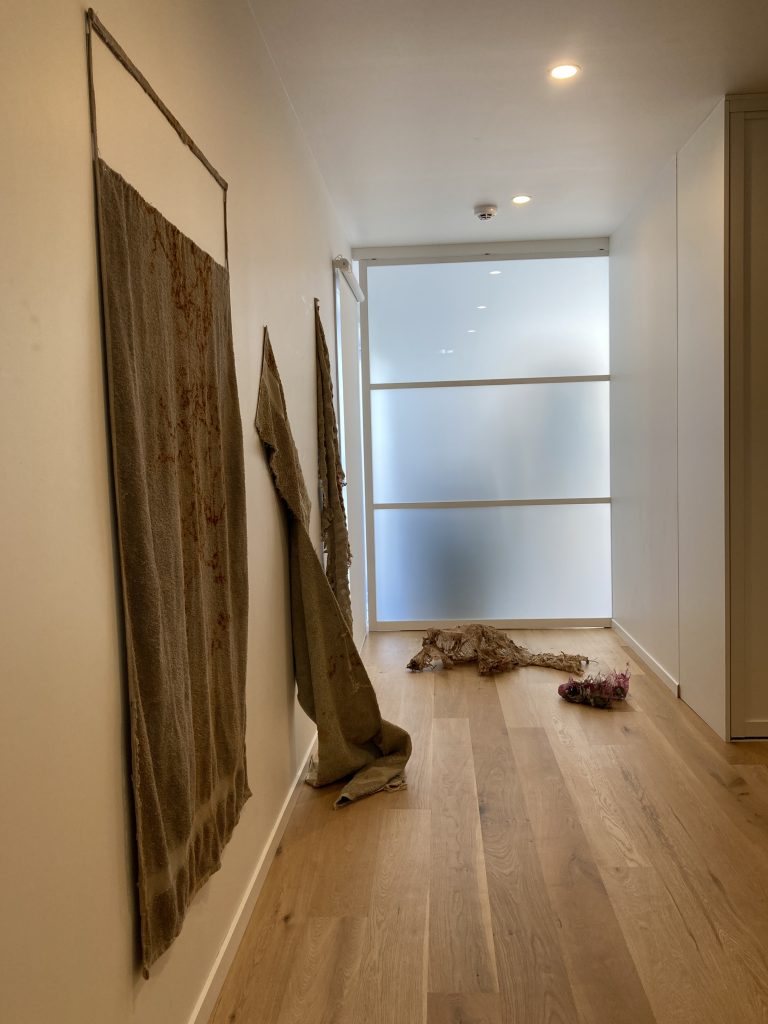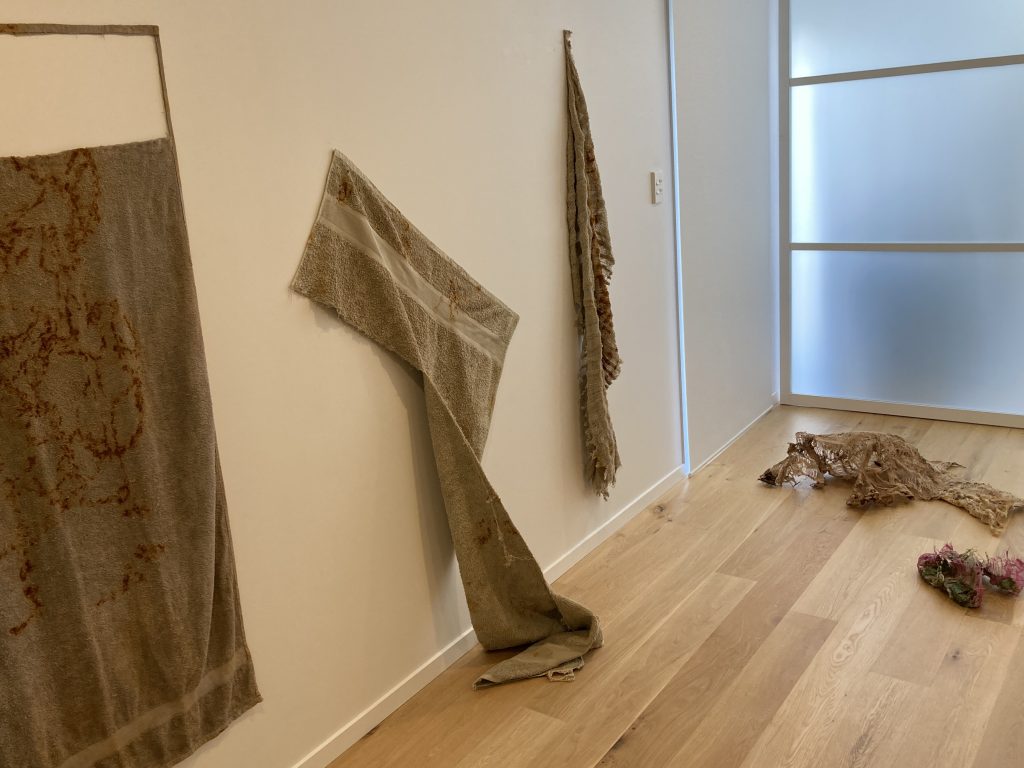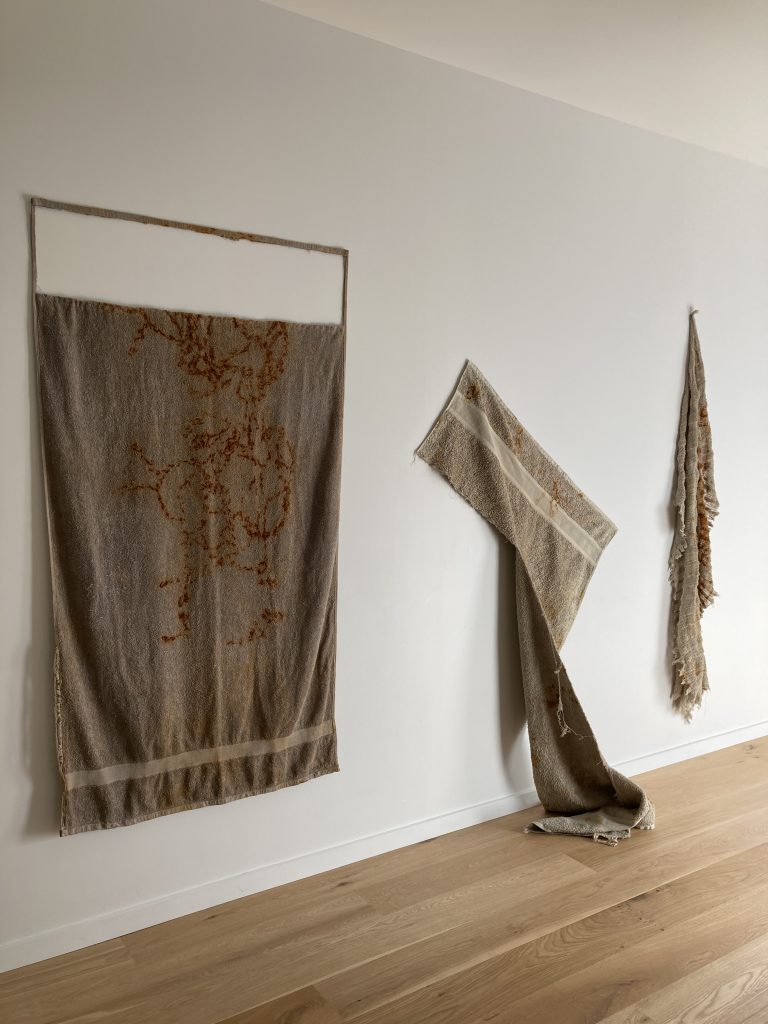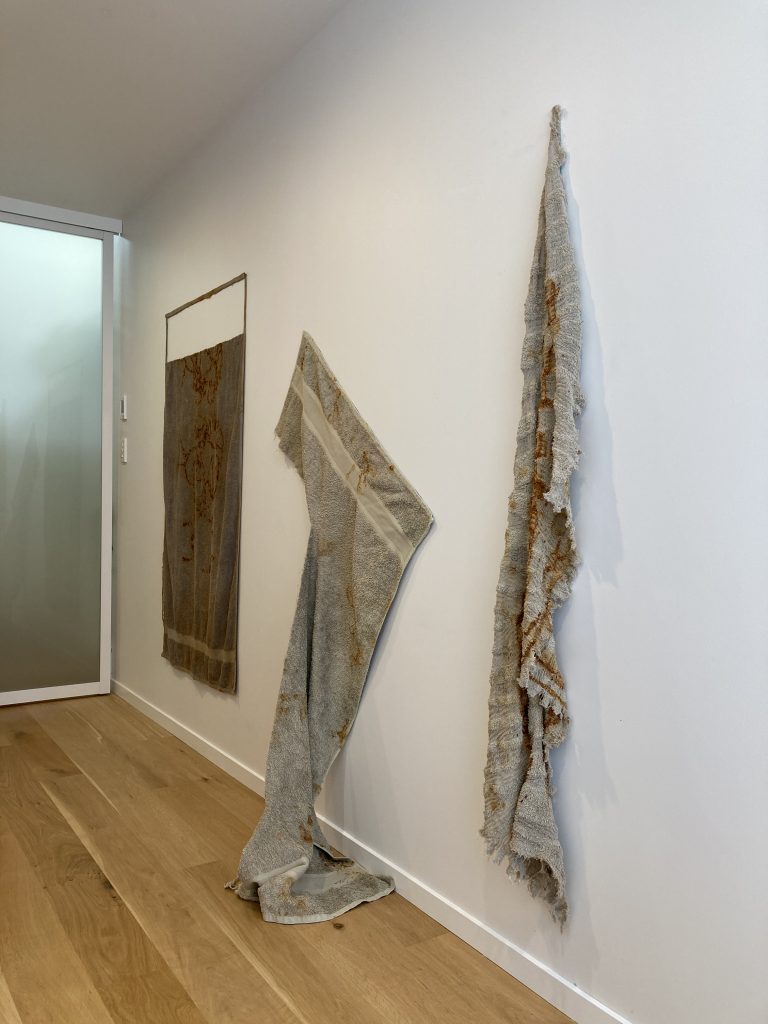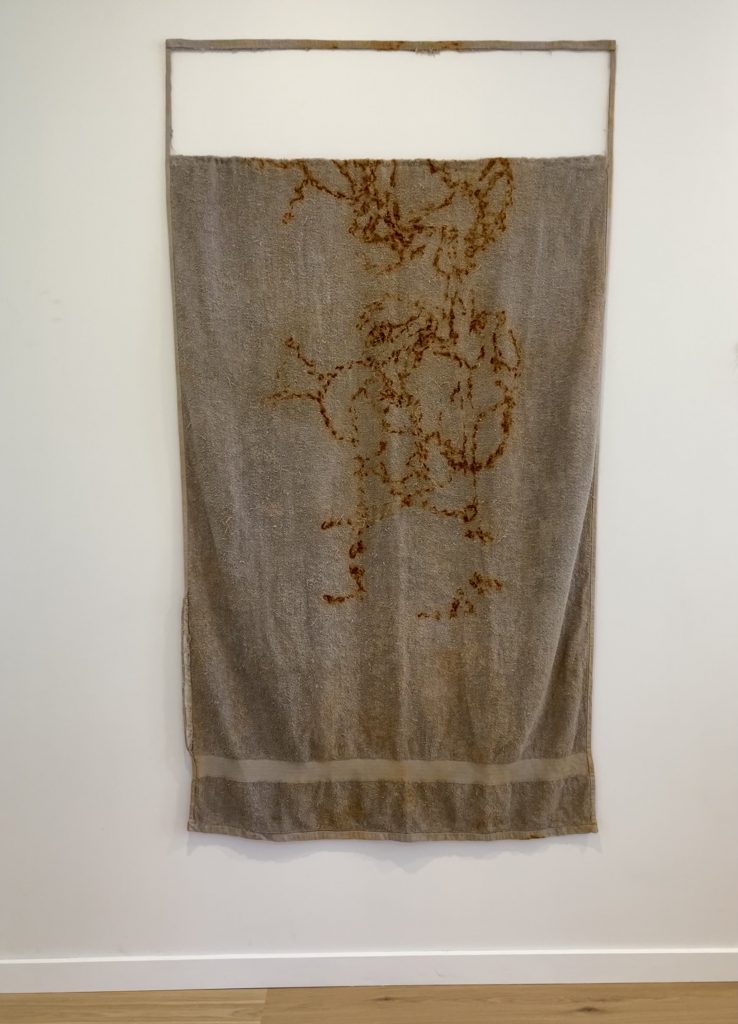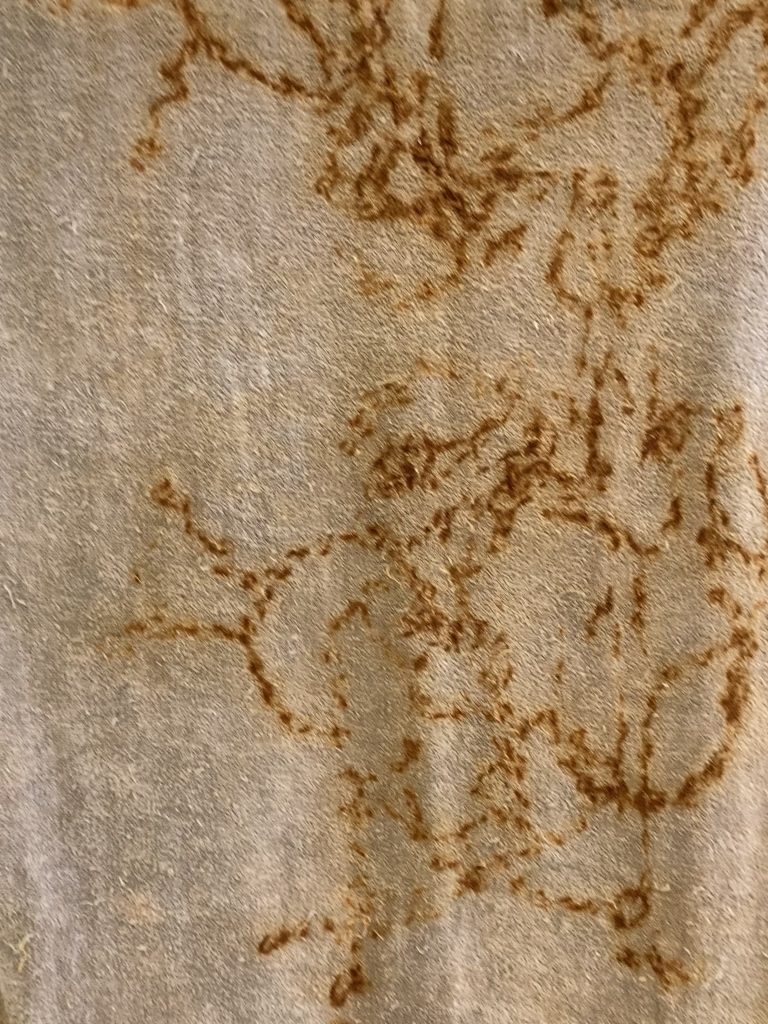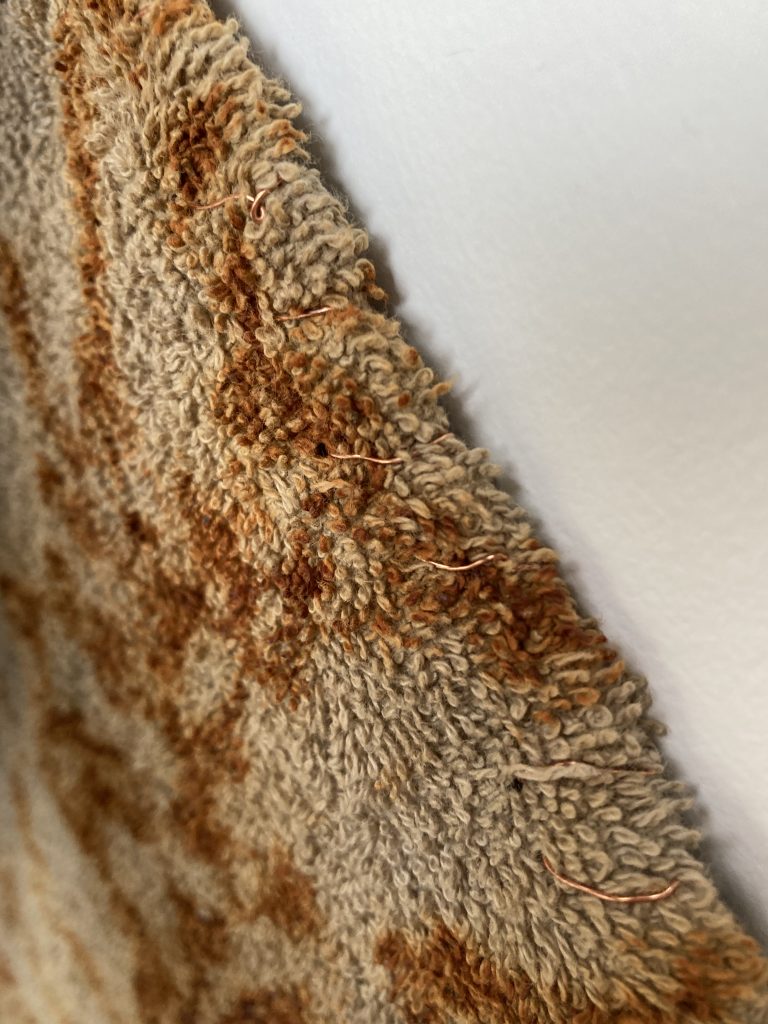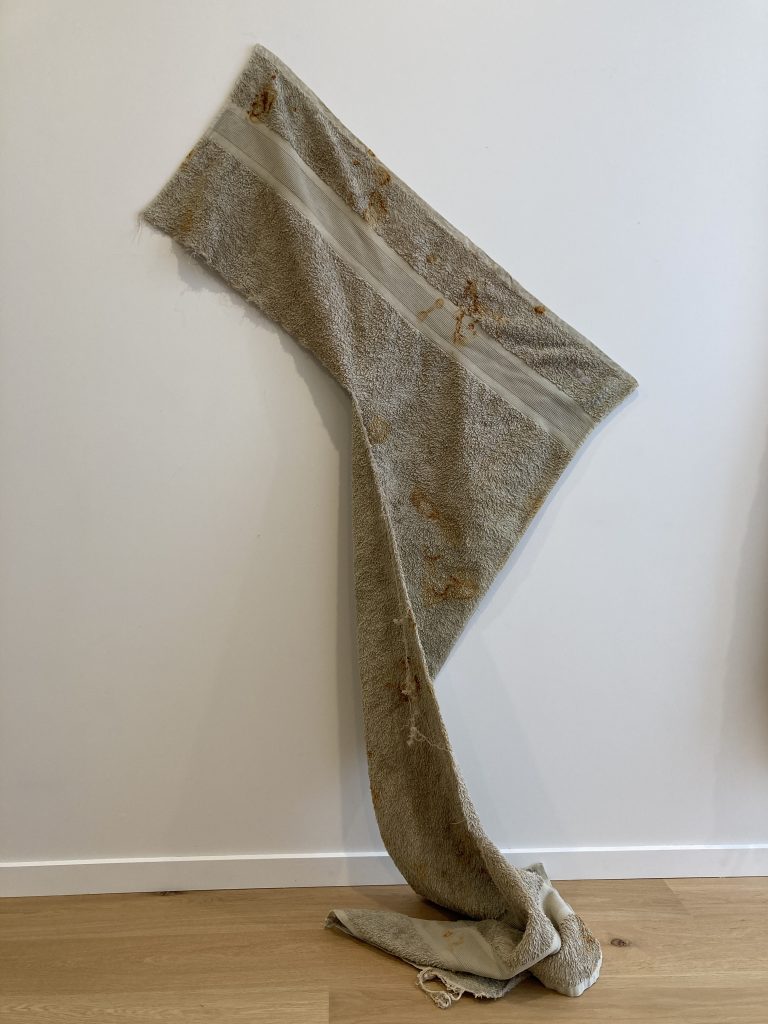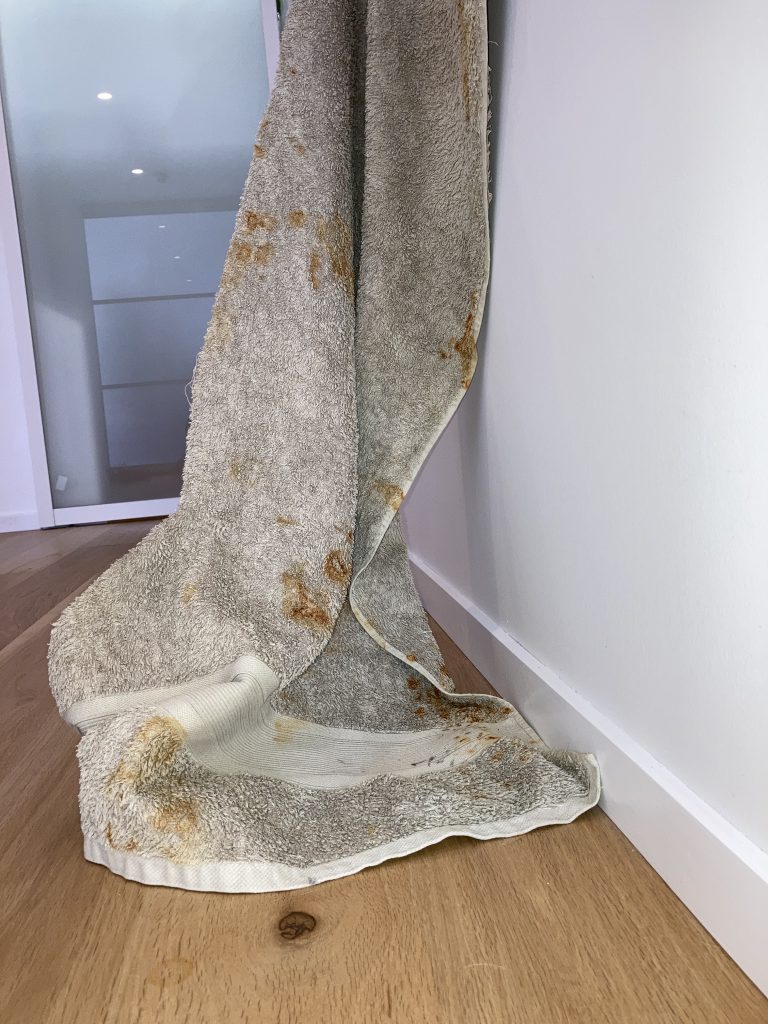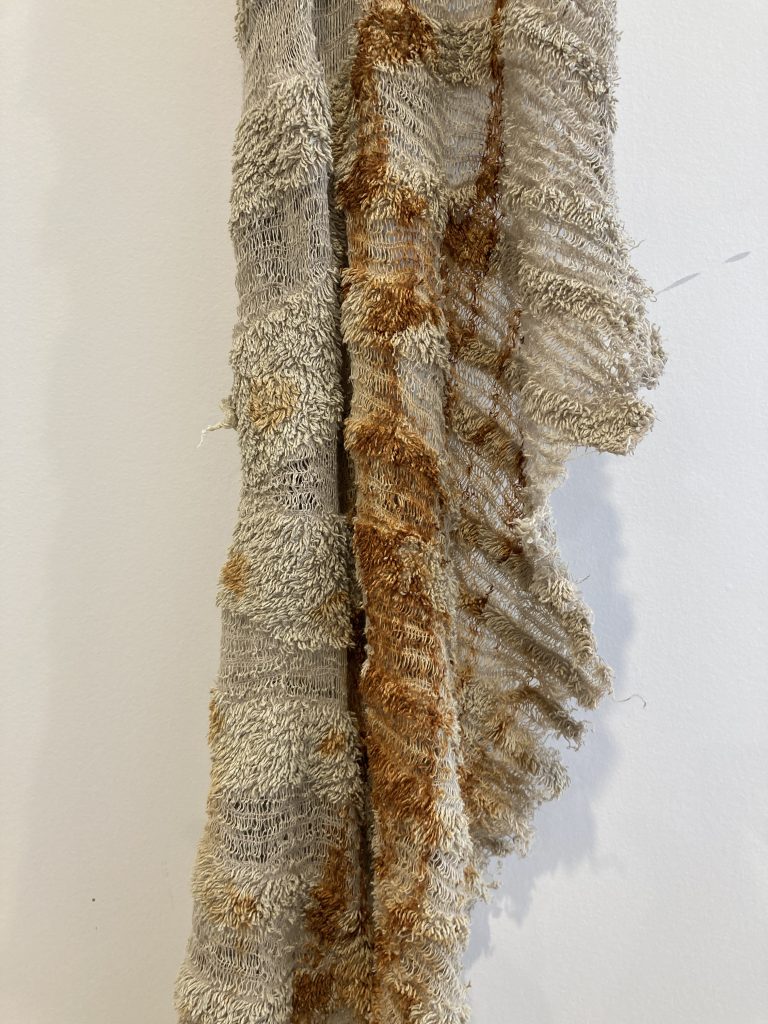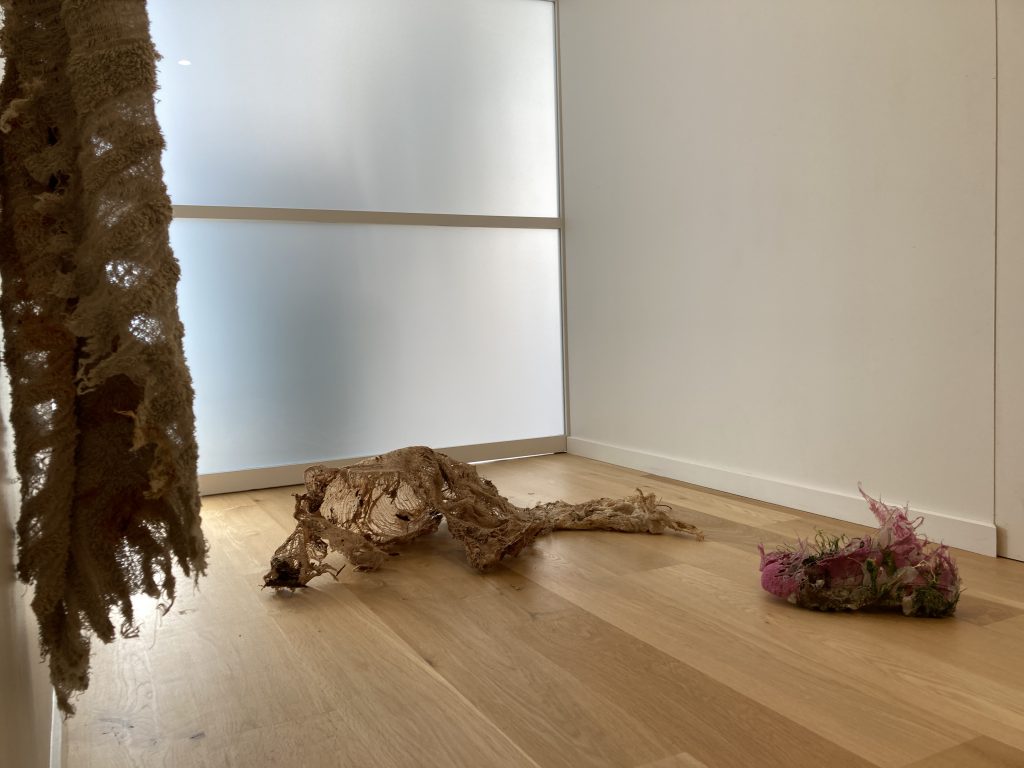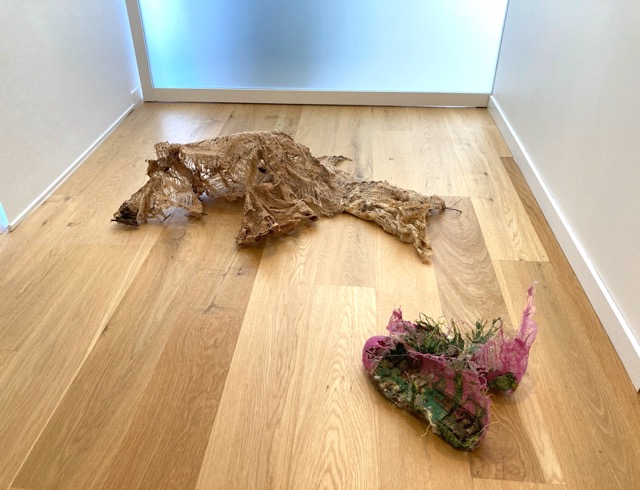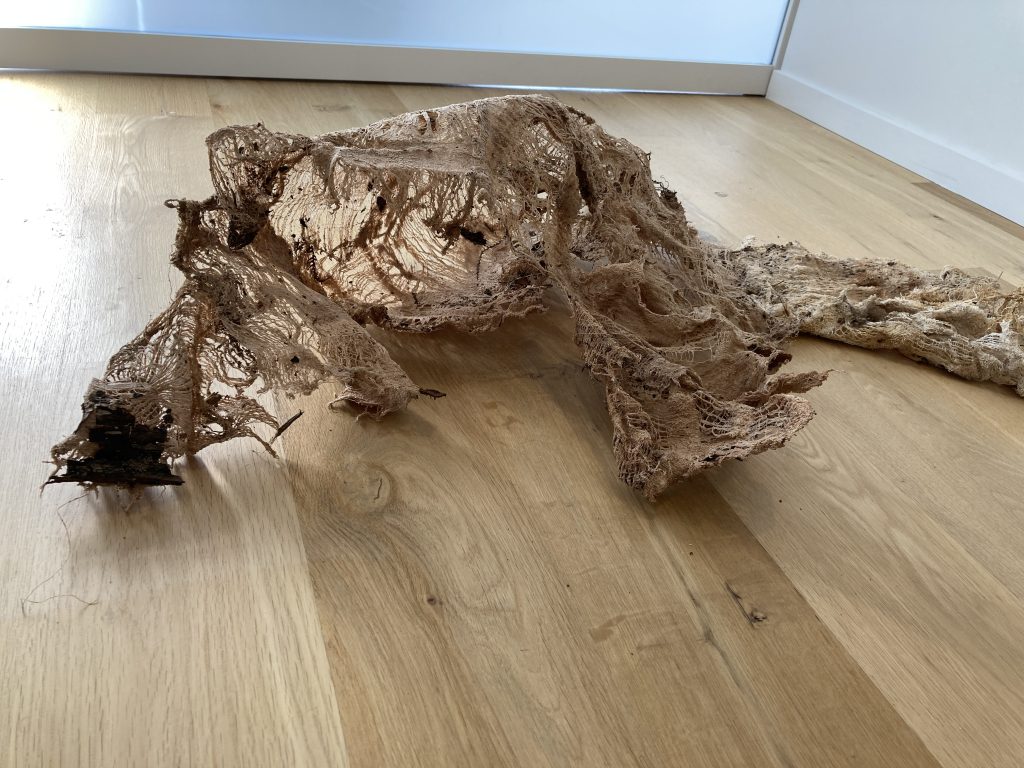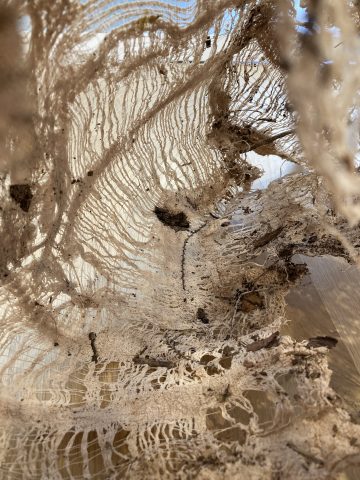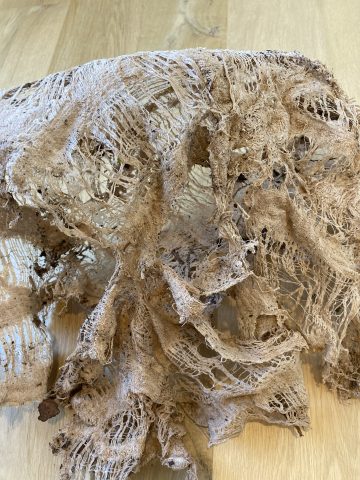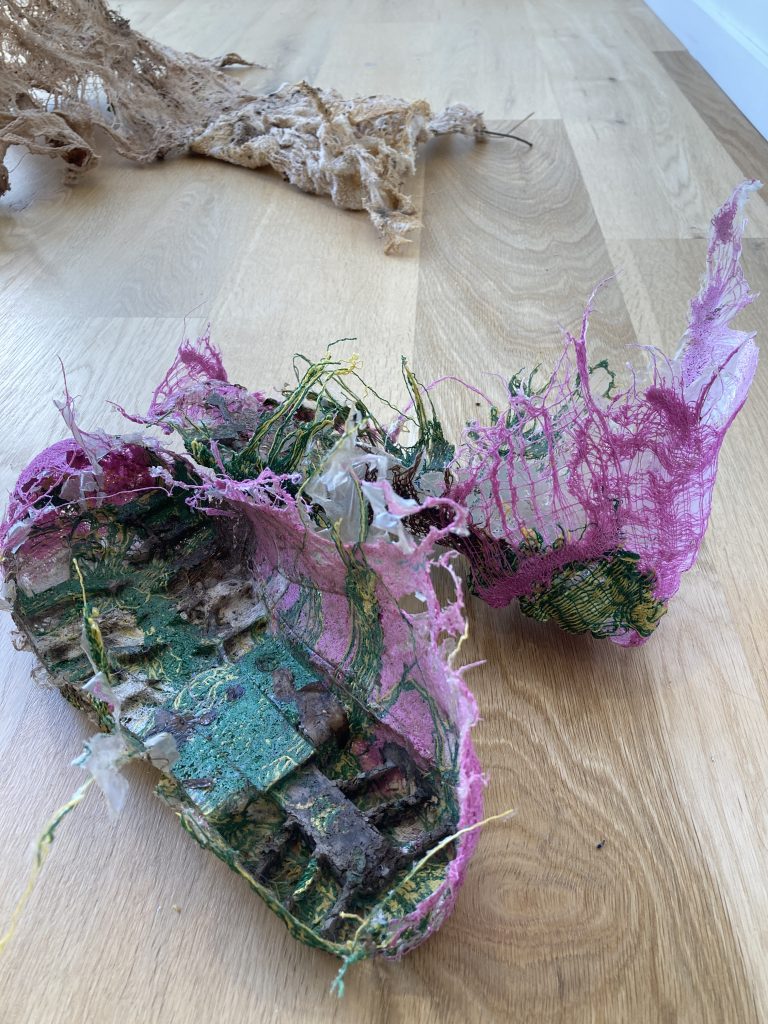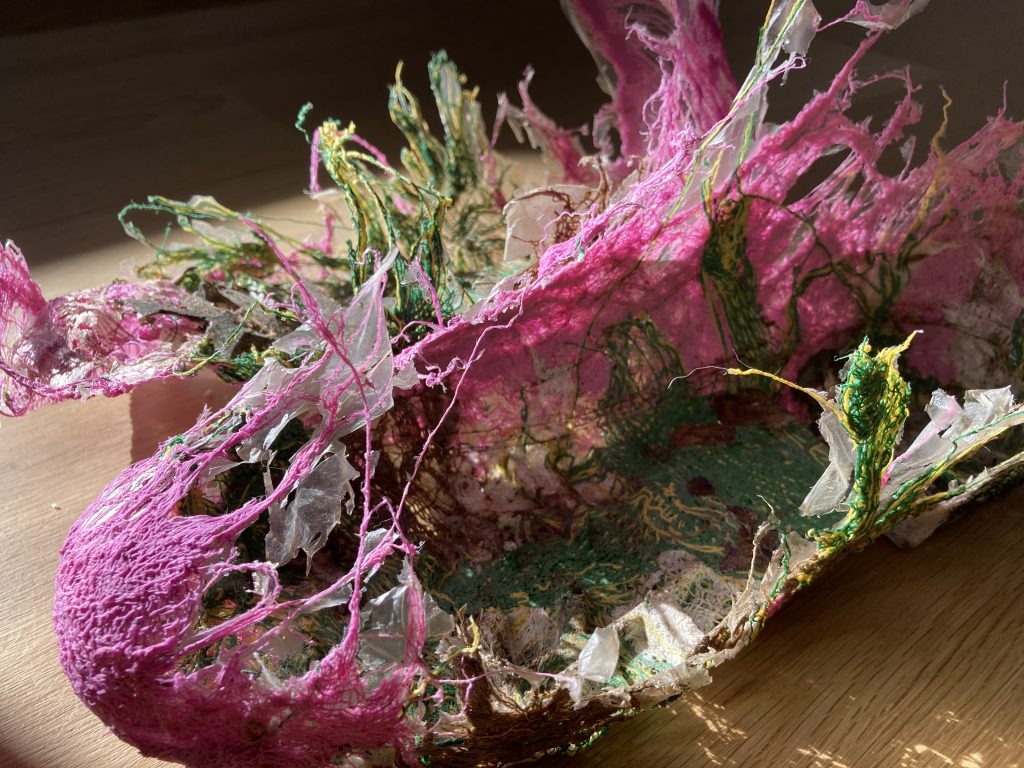Wendy Lawson
In Contact
2021
In Contact deals with the permeable aspects of a wet and living experience, tracing face to face contact with the “sticky materiality”[1] of things: where materials imprint upon one another and the traces are documented through transfer. The forms of materials determine each interaction, the residual marks are varied and unpredictable enlivening agency in the forms themselves.
Curious and sensorial investigations into specific sites that exist in and around my family home, have illuminated human and nonhuman agents and materials in gatherings of lively matter. Amongst the mattering is my own weighty presence sinking in and out of these “open-ended assemblages of entangled ways of life.”[2]
Co-opting dis-used towels, I process temporal, material and spatial interconnections that manifest from my practical encounters. Following a curiosity with the rusting material body, human and nonhuman, I am working with ideas of deterioration and decay, corroding consequences of time and exposure, and oxidisation processes in the earth. Rusting speaks to the leaking, aging, aspect of things, that like most natural phenomena, eventually find their way into the ground.
Working with the anthropomorphic qualities of everyday materials, In Contact invites the beholder to embark on their own sensory exploration, with the inter-relationships of shapes, forms, textures, folds and surfaces, allowing the body to be led.
From left to right
1. With rusting chain, 2021, discarded towel, rusting, antibacterial copper wire.
2. With rusting fragments, 2021, discarded towel, rusting.
3. With rusting saw, 2021, discarded towel, rusting.
4. With partially rotting tree stump, 2021, discarded towel, English Breakfast tea stain, non-toxic glue, tree residue.
5. With gumboots treading lightly, 2021, discarded towel parts, non-toxic glue, garden residue.
[1] Referring to the frictional charge of a material as it comes into contact with other material bodies, human and nonhuman. First used by Anna Tsing in her book Friction: an Ethnography of Global Connection. Princeton, N.J. :Princeton University Press, 2005.
[2] Tsing, Anna Lowenhaupt. The Mushroom at the End of the World: On the Possibility of Life in Capitalist Ruins. Princeton University Press, 2015. 4.
Figure 1: In Contact Installation view
Figure 2: In Contact, Installation view
Figure 3: With rusting chain, With rusting fragments, With rusting saw; installation view
Figure 4: With rusting chain, With rusting fragments, With rusting saw; installation view
Figure 5: With rusting chain, 2021, discarded towel, rusting, antibacterial copper wire; installation view
Figure 6: With rusting chain; detail
Figure 7: With rusting fragments, 2021, discarded towel, rusting; installation view
Figure 8: With rusting fragments; detail
Figure 9: With rusting saw; detail
Figure 10: Installation view
Figure 11: Installation view
Figure 12: With partially rotting tree stump, 2021, discarded towel, English Breakfast tea stain, non-toxic glue, tree residue; installation view
Figure 13: With partially rotting tree stump; detail
Figure 14: With gumboots treading lightly, 2021, discarded towel parts, non-toxic glue, garden residue.; installation view
Figure 15: With gumboots treading lightly; detail
